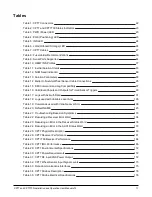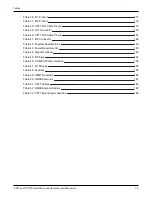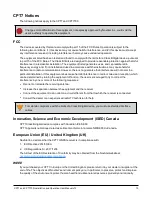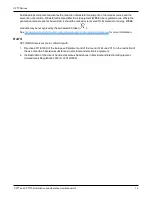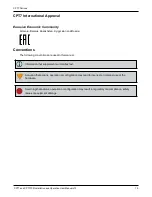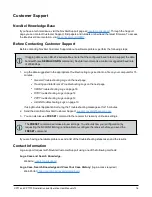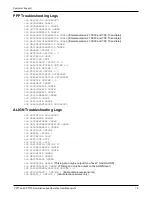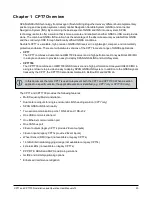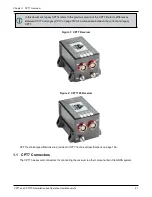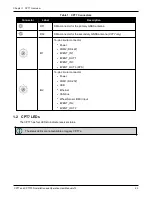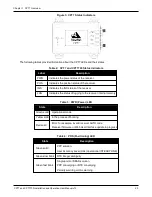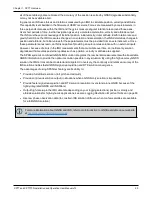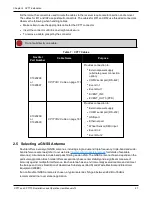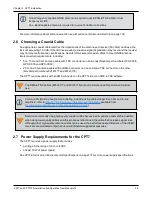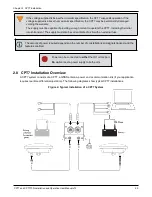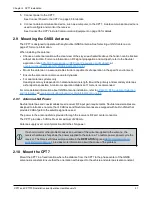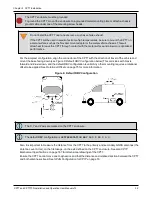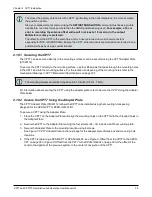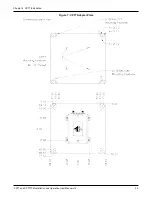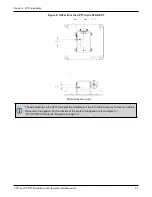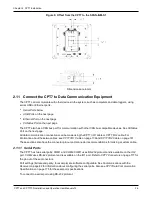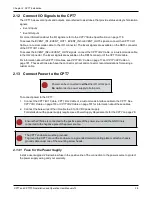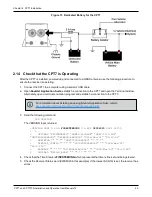
Chapter 1 CPT7 Overview
CPT7 and CPT7700 Installation and Operation User Manual v12
25
all of the satellite signals are blocked, the accuracy of the position reported by GNSS degrades substantially,
or may not be available at all.
In general, an INS uses forces and rotations measured by an IMU to calculate position, velocity and attitude.
This capability is embedded in the firmware of OEM7 receivers. Forces are measured by accelerometers in
three perpendicular axes within the IMU and the gyros measure angular rotation rates around those axes.
Over short periods of time, inertial navigation gives very accurate acceleration, velocity and attitude output.
The INS must have prior knowledge of its initial position, initial velocity, initial attitude, Earth rotation rate and
gravity field. Since the IMU measures changes in orientation and acceleration, the INS determines changes in
position and attitude, but initial values for these parameters must be provided from an external source. Once
these parameters are known, an INS is capable of providing an autonomous solution with no external inputs.
However, because of errors in the IMU measurements that accumulate over time, an inertial-only solution
degrades with time unless external updates such as position, velocity or attitude are supplied.
The SPAN system’s combined GNSS+INS solution integrates the raw inertial measurements with all available
GNSS information to provide the optimum solution possible in any situation. By using the high accuracy GNSS
solution, the IMU errors can be modeled and mitigated. Conversely, the continuity and relative accuracy of the
INS solution enables faster GNSS signal reacquisition and RTK solution convergence.
The advantages of using SPAN technology are its ability to:
l
Provide a full attitude solution (roll, pitch and azimuth)
l
Provide continuous solution output (in situations when a GNSS-only solution is impossible)
l
Provide faster signal reacquisition and RTK solution resolution (over stand-alone GNSS because of the
tightly integrated GNSS and INS filters)
l
Output high-rate (up to the IMU data rate depending on your logging selections) position, velocity and
attitude solutions for high-dynamic applications, see also
Logging Restriction Important Notice
l
Use raw phase observation data (to constrain INS solution drift even when too few satellites are available
for a full GNSS solution)
For more information about GNSS and INS, refer to
An Introduction to GNSS
available on our website
at

